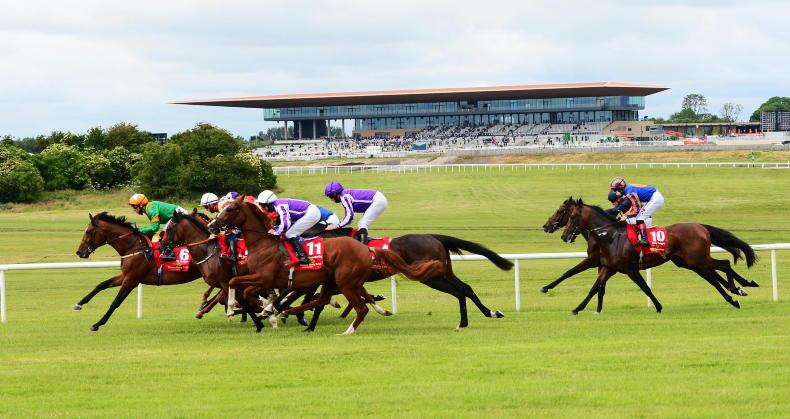It’s Derby week and Chief Groundsmanager at The Curragh Racecourse, Richie Brophy, is responsible for maintaining what is arguably recognised as the best racing ground in Europe.
The grass used on the course is perennial rye grass which is sprinkled with creeping red fescue. This mix gives a matting effect and helps protect the ground from the hammering hooves.
There are 100 acres of racing ground at the Curragh Racecourse to be maintained, spread through four different racectracks. The fertilisation programme starts in March and this really kicks off the growth.
From May onward seaweed extract is spread on the racing ground as well as 20 litres per hectare of magnesium nitrate. This extra feed gives the grass its rich green colour.
As soon as growth starts, mowing takes place to keep the grass maintained at four inches. The 30-acre Derby track receives three mows within the month before the Irish Derby and on the morning of the big race it receives a tiny clip.
Reservoir
When it comes to water, there is a four million litre reservoir in the centre of the course from where water can be pumped anywhere onto the track.
There is a complete main ring around the track with a valve point at each furlong mark and the system is called a Briggs Irrigation System.
The optimum ground for racing is ‘good, good to yielding’. If there are two or three days of racing in a row the groundstaff have to move two miles of rails to give fresh racing ground the next day.
After racing the staff squeeze back any divots that have arisen from the horses hooves as they gallop using a ring roller which doesn’t bruise the grass.
In order to fill in the divots caused by the galloping horses, the groundstaff fill them in with a mix of hay seeds, sand, topsoil and peat.
A week before the big race, Richie walks the track with Clerk of the Course Brendan Sheridan. After examination they issue a notice. Richie has a direct line with Met Éireann which is massively important to them.
If the weather is dry and he has to water the ground, which can affect the going, he then has to notify the public and trainers as that can decide whether a horse runs or not.
When the racing season is over Richie uses a drainer to let the rain in and help the worms work away at the ground and assists with resting the soil.






 This is a subscriber-only article
This is a subscriber-only article






SHARING OPTIONS: